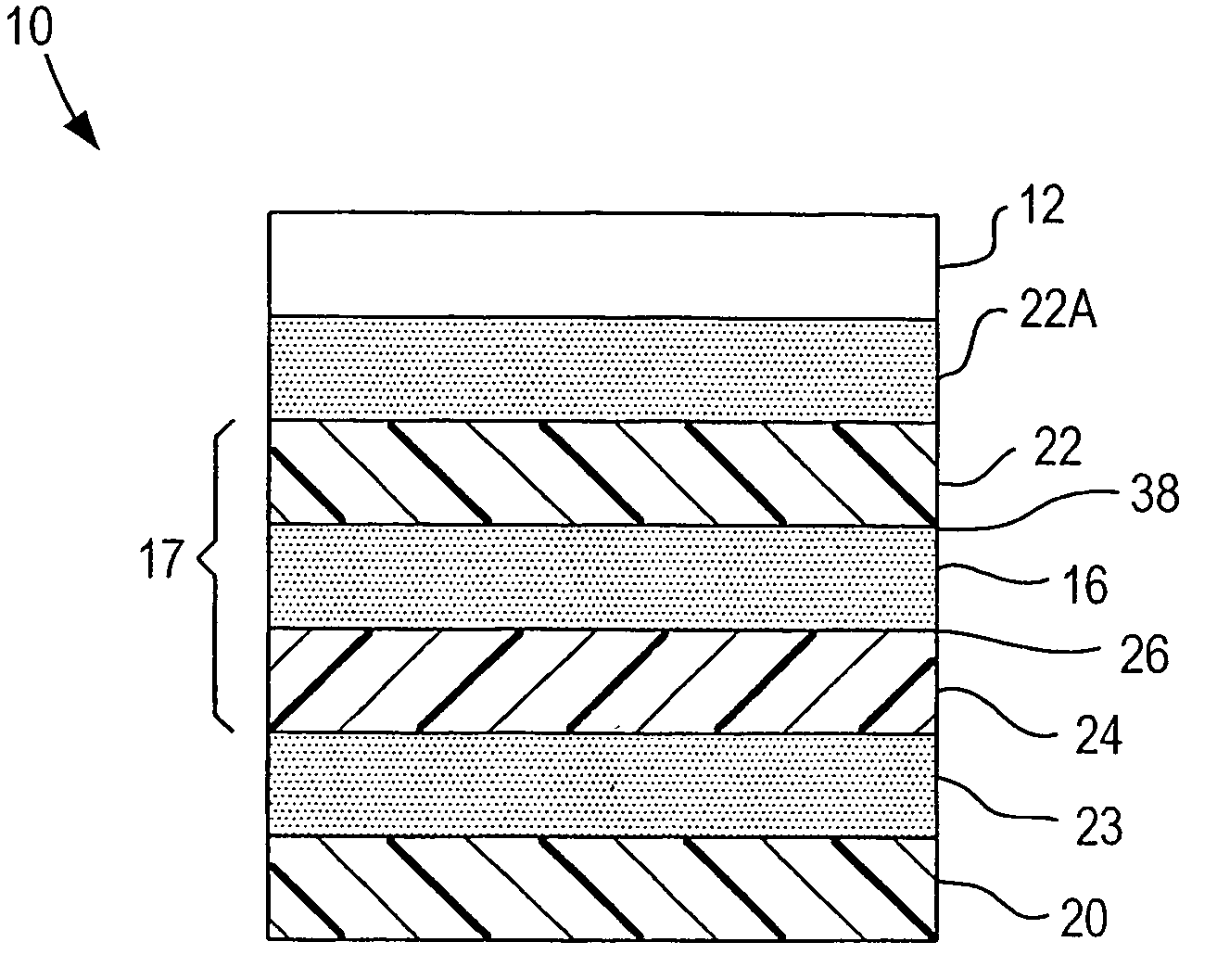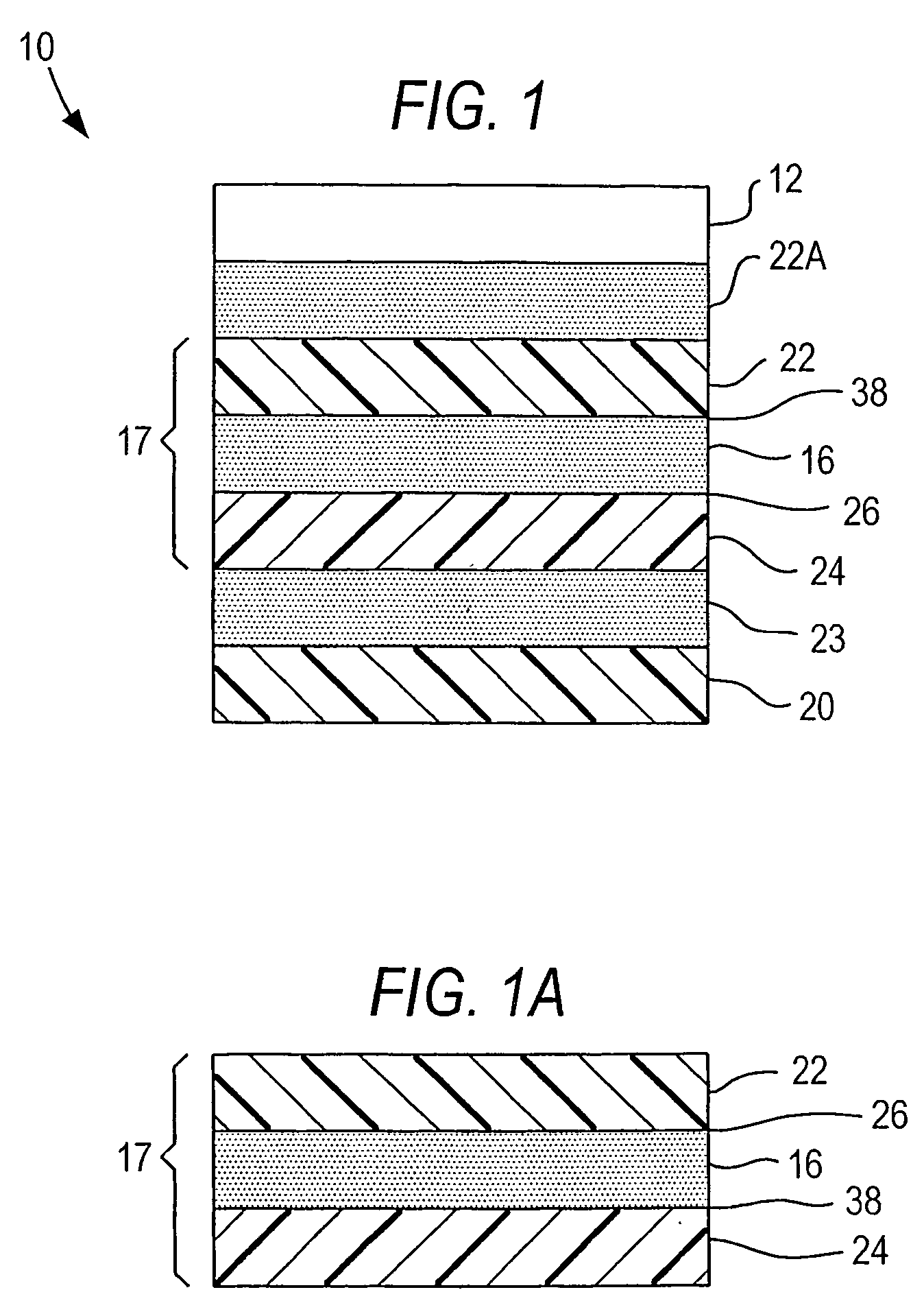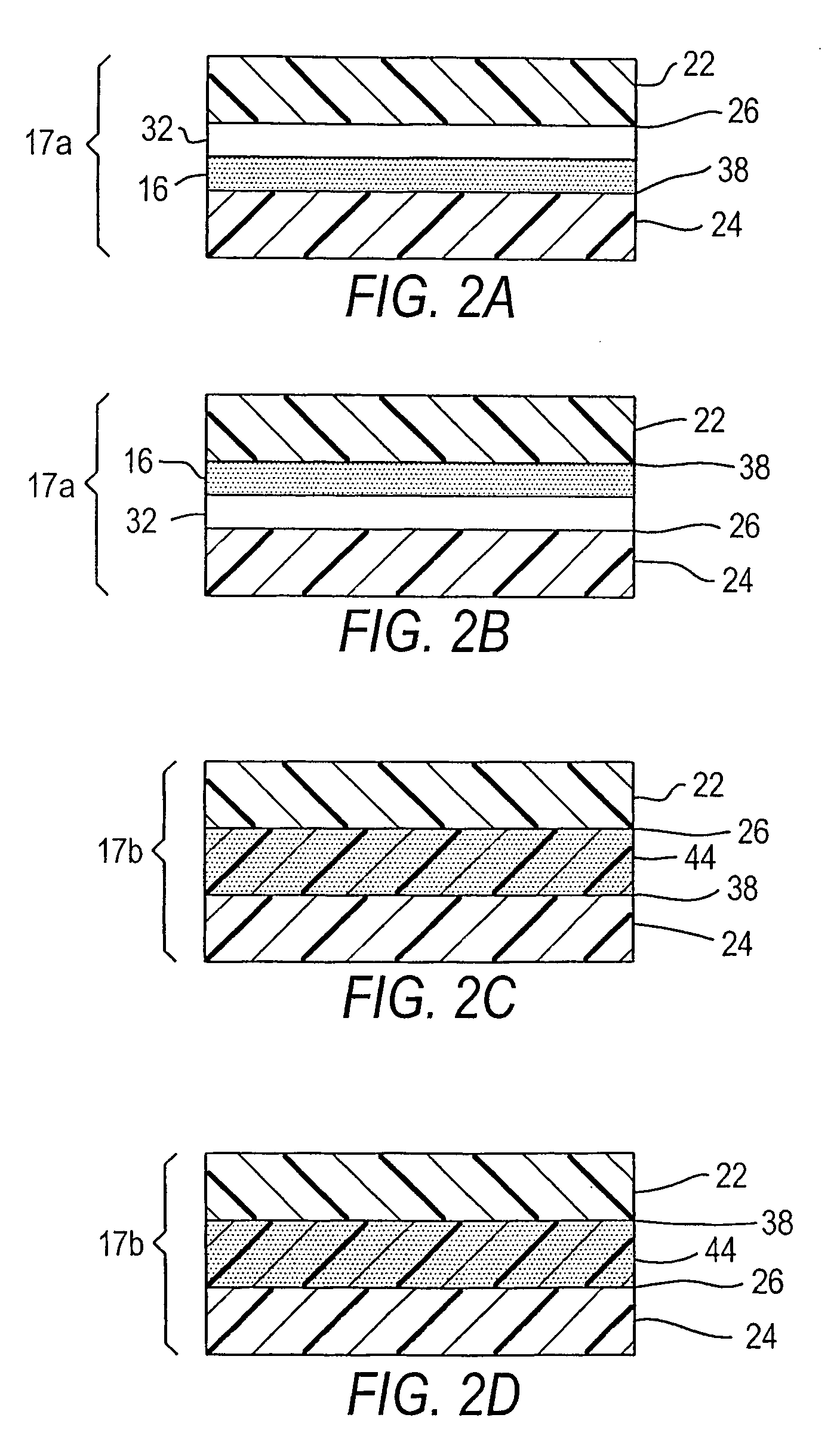Removable labels, coupons and the like
a technology of labels and coupons, applied in the direction of identification means, seals, instruments, etc., can solve the problems of limiting the use of polymeric films as substrates, affecting the appearance, and affecting the effect of treatment effect, so as to increase or decrease the exposure time of treatment, increase or decrease the distance
- Summary
- Abstract
- Description
- Claims
- Application Information
AI Technical Summary
Benefits of technology
Problems solved by technology
Method used
Image
Examples
example 1
[0128] A convential web of non-surface-treated 144 gauge oriented PET polyester (1.44 mil) (available from Advanced Web Products, 529 Fifth Ave., NY, USA) was corona discharge treated at 100 ft / min. using a power supply (model No. AB6628) available from Pillar Technologies, Inc., Heartland, Wis., USA, and a modified corona treater (AB1977) which was designed to operate with a rotary electrode according to FIG. 4 using a pattern of lands and valleys as in FIG. 3 on a 45 degree angle across the running direction of the width of the material to form a pattered treated web. The width of the treated area was {fraction (3 / 16)} inches and the non-treated area was {fraction (3 / 16)} inches.
[0129] A 100% surface treated web of 200 gauge oriented PET polyester was prepared using a power output of 0.4 KW and corona discharge apparatus adapted to treat the whole surface. This treated web was gravure coated with a modified carboxylated acrylic latex prepared as follows: 80 parts Hystrex V43 (acr...
example 2
[0133] Non-surface-treated 65 gauge oriented PET polyester (0.65 mil) was corona discharge treated in a sine wave pattern continuously across a web using the modified corona treater described in Example 1. Using the power outputs set forth in Table II the amplitude of the sine wave was {fraction (1 / 4)} inch and the thickness of the electrode providing the treatment was {fraction (3 / 32)} inch the frequency of the sine wave one-half inch running in the machine direction with a phase difference of one-half inch across the web.
[0134] A coating of a modified polyurethane available from Adhesion Systems, Patterson, N.J., AS37637 (19-21% solids; viscosity 100-500 cps) was applied at a coat weight of 0.8 grams dry / 1000 sq. in. immediately following treatment. The resulting coated web is laminated with laminating adhesive PD384-30 Adhesion Systems Inc. (38-40% solids; 20-200 CPS at 60 psi and 140° F.) mixed with 1% of a 100% solid polyfunctional aziridine cross-linker (AS316 Adhesion System...
PUM
| Property | Measurement | Unit |
|---|---|---|
| thick | aaaaa | aaaaa |
| surface tension test | aaaaa | aaaaa |
| peel angle | aaaaa | aaaaa |
Abstract
Description
Claims
Application Information
 Login to View More
Login to View More - R&D
- Intellectual Property
- Life Sciences
- Materials
- Tech Scout
- Unparalleled Data Quality
- Higher Quality Content
- 60% Fewer Hallucinations
Browse by: Latest US Patents, China's latest patents, Technical Efficacy Thesaurus, Application Domain, Technology Topic, Popular Technical Reports.
© 2025 PatSnap. All rights reserved.Legal|Privacy policy|Modern Slavery Act Transparency Statement|Sitemap|About US| Contact US: help@patsnap.com



